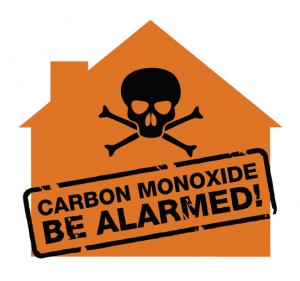 Carbon Monoxide and solid fuel
Carbon Monoxide and solid fuel
Many people think that carbon monoxide only comes from gas appliances but the truth is that ANY fuel that burns creates carbon monoxide.
By now we should all know that carbon monoxide is a very dangerous, colourless, odourless gas, all appliances installed since 1st October 2010 must have a carbon monoxide detector fitted in the same room.
But for a little better understanding, let’s take a quick trip back to high school chemistry class. The fuels you burn for home heating are mostly compounds known as hydrocarbons (hydrogen + carbon). In your appliance these hydrocarbons are mixed with oxygen and burned to produce heat. When your appliance and chimney are working properly, the fuel is burned more or less completely and the resulting fumes are mainly carbon dioxide (carbon + 2 oxygen atoms) and water vapour. If your appliance doesn’t get enough oxygen, either because the house is too air tight or the chimney isn’t functioning properly, carbon monoxide (carbon +1 oxygen atom) is produced instead. It’s the lack of that one little oxygen atom that causes all the trouble.
 |
 |
What carbon monoxide does to you
Too much carbon monoxide in your blood will kill you. Most of us know we should avoid this. Less well known is the fact that low-level exposure to this gas also endangers your health.
In the body the red blood cells transport oxygen around the body. It can do this because the chemical bonds between the oxygen and the haemoglobin are weak enabling the red cells to easily drop the oxygen where it is needed. Carbon monoxide forms a more permanent bond with haemoglobin which cannot normally be broken and prevents the blood transporting oxygen to the body tissues.
The side effects that can result from this low-level exposure include permanent organ and brain damage. Infants and the elderly are more susceptible than healthy adults, as are those with anaemia or heart disease.
The symptoms of low-level carbon monoxide poisoning are so easily mistaken for those of the common cold, flu or exhaustion that proper diagnosis can be delayed. Because of this, be sure to see your doctor about persistent, flu-like symptoms, chronic fatigue or generalized depression.
Why chimney maintenance is important
When fuels burn in an appliance, the fumes that are the by-products of combustion-including carbon monoxide – are released into the chimney. Removing these fumes from the living area is the main purpose of a chimney. In addition to carrying off toxic gases, chimneys also create the draught (flow of air) that provides the proper air and fuel mixture for efficient operation of the heating appliance. Unfortunately, many chimneys in daily use in homes throughout the country either are improperly sized or have conditions that make them unable to perform their intended function.
Chimneys servicing gas appliances need to be cleaned annually
As well as making sure that all gas appliances are serviced annually it is also the landlord’s responsibility to make sure that the flue ways are cleaned annually by a qualified chimney sweep.
To help stop the vast amount of people dying each year from carbon monoxide poisoning, the health and safety executive has documentation stating that all gas flues need to be swept annually by qualified chimney sweeps and that this responsibility cannot be passed on to the tenant.
Beware of the silent killer, HSE’s reminder during CO Awareness week
Additional info
| Carboxyhaemoglobin % | Symptom |
| 0-10 | None |
| 10-20 | Tightness across forehead |
| 20-30 | Headaches |
| 30-40 | Severe headache, weakness, dizziness, nausea and vomiting |
| 40-50 | Coma, intermittent convulsions |
| 60-70 | Depressed heart action, death possible |
| 70-80 | Weak pulse, slowed respiration, death likely |
| >80 | Death in minutes. |
If you suspect that you or someone you know is suffering from carbon monoxide poisoning get urgent medical advice and do not use your appliance until it has been checked by a competent person.